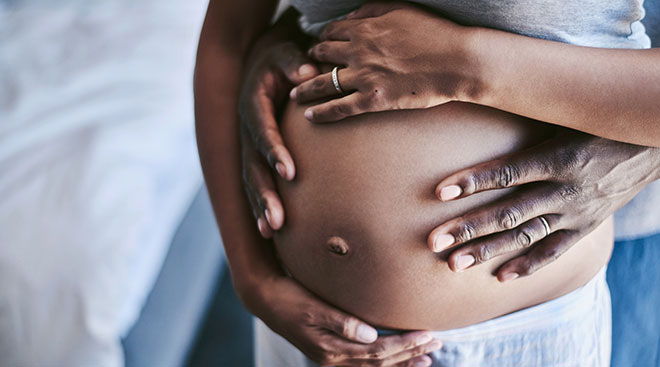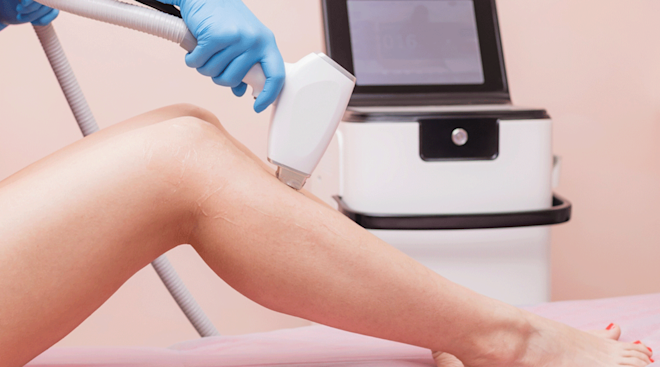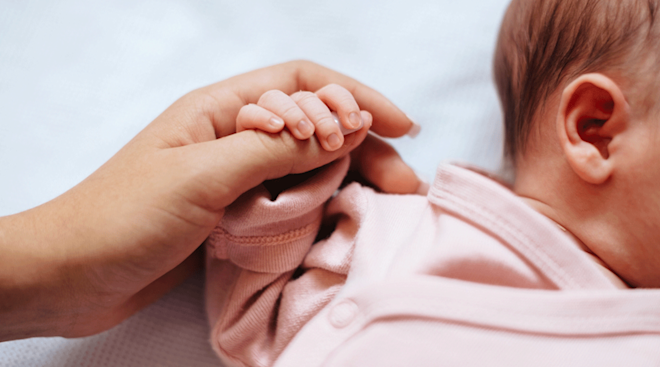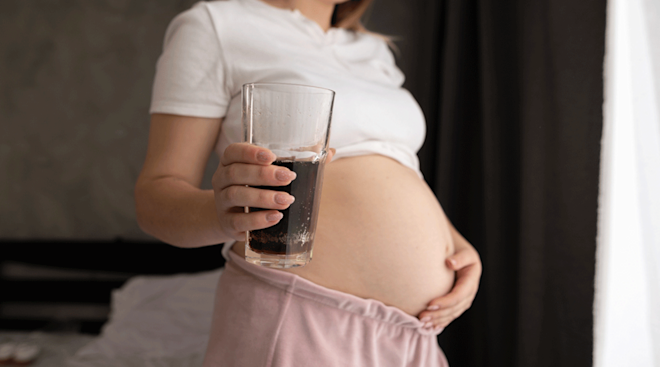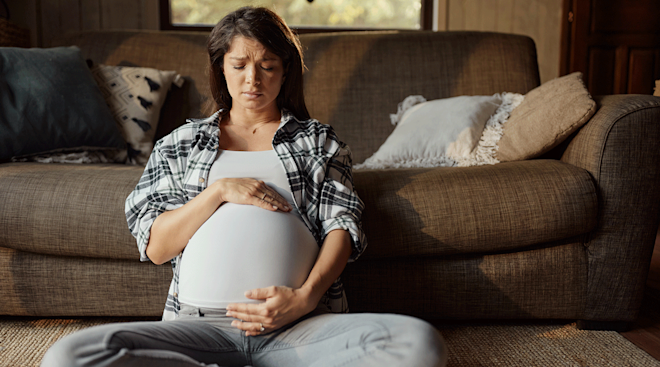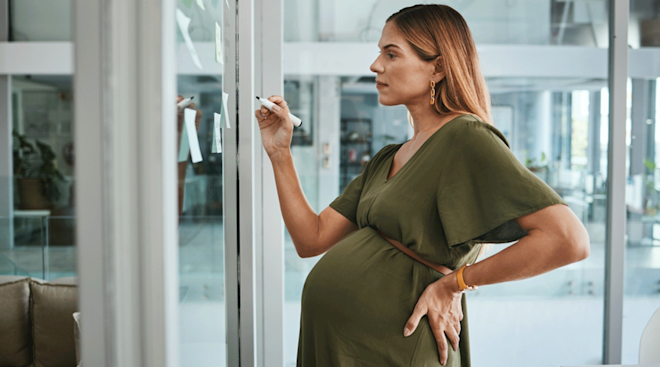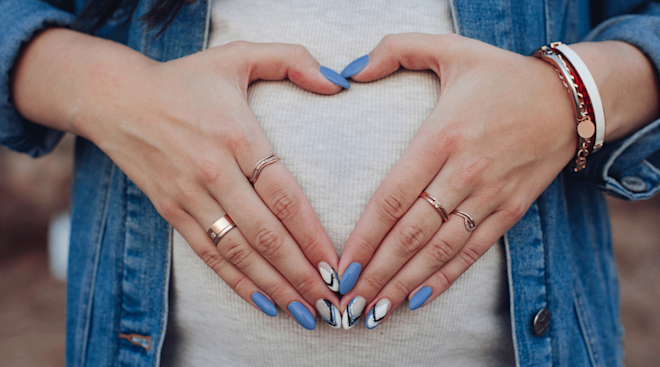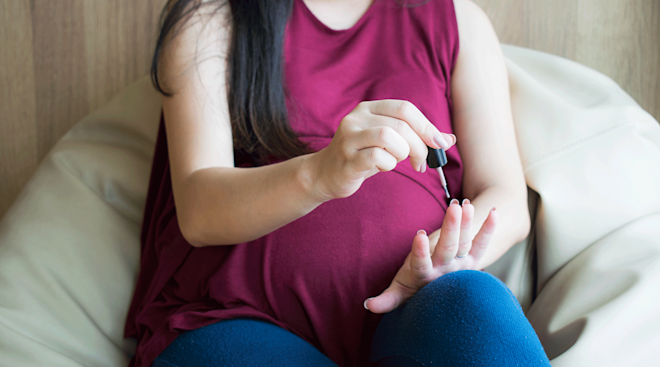Why Is the Black Maternal Mortality Rate So High—And What Can We Do?
Maternal mortality is a global issue—but despite being one of the richest and most technologically advanced countries in the world, the United States has the worst maternal mortality rate among similar developed nations. According to the US Centers for Disease Control and Prevention (CDC), about 700 mothers die of as a result of pregnancy or delivery-related complications every year, and half of those deaths are considered preventable. Moreover, maternal mortality has claimed the lives of Black women at disproportionately higher rates over the past 100 years. Non-Hispanic Black mothers currently suffer pregnancy–related deaths at three to four times the rate of white and Hispanic women. These statistics are jaw-dropping, and disparities in maternal health and mortality have remained a persistent issue for decades.
For all women in the United States, the maternal mortality rate is a problem—but for Black women, it’s an urgent and tragic crisis. If you’re looking to start a family, it’s understandable to be concerned by the statistics. But the point of this discussion is not to prompt fear—it’s to recognize the unfortunate reality for birthing mothers in our country, to help bring about change and to ensure that all women, especially Black women, are informed, prepared and empowered to begin a safe, healthy and successful pregnancy journey.
Let’s first define several key terms that are sometimes used interchangeably but are actually different:
• Severe maternal morbidity (SMM) is an unexpected outcome of labor and delivery with short- or long-term consequences to a woman’s health. If risk factors for such events—which include cesarean, chronic disease, maternal age and race—are not identified and treated, they can result in maternal death.
• Maternal mortality, as defined by the World Health Organization, is when death occurs during pregnancy or within 42 days of the end of pregnancy due to pregnancy-related issues. The maternal mortality rate is the number of maternal deaths per 100,000 live births.
• Pregnancy-related mortality refers to death during pregnancy or within one year of the end of pregnancy due to causes related to the pregnancy itself. The pregnancy-related mortality rate is the number of maternal deaths per 100,000 live births.
In the most recent CDC data from 2019, 754 women died of maternal causes in the US, a maternal mortality rate at 20.1 per 100,000 births. While the rate had been fairly flat between 2002 and 2018, these latest numbers indicate a significant increase from the 2018 rate of 17.4 per 100,000. Racial and ethnic disparities persist. As of 2019, the maternal mortality rate for non-Hispanic Black women is 44; for non-Hispanic white women it’s 17.9, and 12.6 for Hispanic women.
A Blue Cross Blue Shield report also revealed that the rate of severe maternal morbidity is increasing among all US women, with worsening disparities among racial and ethnic minorities, putting them at higher risk of adverse health outcomes and maternal death.
These statistics for Black women worsen with age and don’t improve based on advanced education or improved socioeconomic status. According to the CDC, the mortality rate for non-Hispanic Black women over 25 years old is three to four times that of their white and Hispanic counterparts, with Black women over 40 years old experiencing mortality rates nearly nine times higher than women under 25 years old. In recent years, college-educated Black women died at five times the rate of their white counterparts and were at a 60 percent greater risk for maternal death than white women with less than a high school education.
Differences in mortality rates also exist between geographic locations within the US. Though complete data is unavailable for many states, regional trends show that the maternal mortality rate in certain states concentrated in the South and Southeast is almost double that of other states. Even in states where rates of maternal deaths are low, significant racial disparities still exist.
Over 50 percent of maternal deaths occur after delivery or in the postpartum period. Recent NIH research shows that blood pressure disorders such as preeclampsia are the leading causes of death for Black women, with mortality rates five times higher than for white women. Postpartum cardiomyopathy, embolism and hemorrhage followed as leading causes, with pregnant and postpartum Black women being two to three times more likely than white women to die of hemorrhage and embolism. Late maternal deaths—those occurring between six weeks to one year after birth—were three and a half times more likely among Black women.
From celebrities to athletes to scientists to that young, healthy, new mom next door, we have all heard the stories of Black women and heartbroken families who became casualties of this crisis. No one is immune.
Disparities in healthcare and outcomes have long existed for communities of color. In the landmark 2003 study Unequal Treatment, race and ethnicity were found to be significant drivers of lower quality of healthcare received and poorer health outcomes for minorities. And it’s by no means a thing of the past—just look at the disproportionate impact of the COVID-19 pandemic, resulting in nearly three times the hospitalizations and death rates in Black communities, according to the CDC.
Structural racism—meaning not just an individual prejudice but societal laws, practices and policies that perpetuate inequities for racial minorities—and implicit bias—meaning unconscious stereotypes or attitudes towards certain groups that may negatively influence judgment—have been well documented as causes of poor quality of care and poor health outcomes for communities of color.
These are unfortunately embedded in society and in our healthcare system and negatively impact the care that mothers-to-be receive. Research has shown that stereotypes and bias in how doctors perceive Black patients can lead to the under-treatment of pain and skew algorithms used by insurers and hospitals to allocate resources. Physician burnout has also been linked to increased bias toward Black patients. Plus, chronic stress from historical and contemporary racism and bias are thought to impact the health of Black women: “Weathering,” a concept introduced by Arline Geronimus, ScD, in 1992, refers to the deterioration of health and premature aging of Black people due to the stress and trauma of racism, which can lead to increased chronic disease and worse health outcomes.
In addition to racism and bias, the disproportionate prevalence of chronic diseases among Black women, social and economic factors, the social determinants of health (where people live, work and play), barriers to care and poor quality care all contribute to the rising Black maternal mortality rate.
The Black maternal mortality crisis may seem overwhelming, but there’s a way forward, and there is definitely hope. Standardized care, as well as continued attention to safety measures through maternal mortality review committees and quality collaboratives, have not only helped us better understand the causes of maternal deaths, but have also supplied the data necessary to provide evidence-based care and improve outcomes.
How can we, as a society, actively reduce the Black maternal mortality rate? This crisis is complex and multifactorial, and solutions require innovative approaches across the patient, provider, institutional and policy levels. We must improve access to prenatal care, increase the quality of the healthcare provided, ensure access to insurance coverage, expand paid family leave and expand postpartum care. We must address the social determinants of health and their significant impact on health outcomes. It’s often said that your zip code has more of an impact on your health than your genetic code, and that’s simply unacceptable.
The long history of racism in the US; bias in medical education, training and research; and unethical experimentation has created a deep mistrust of the healthcare system within communities of color. Cities, states and professional organizations have declared racism a public health issue and a cause of health disparities for people of color. These issues must be addressed in substantive ways, including mandatory implicit bias training and educating physicians to be culturally humble. We need to support measures to expand the diversity of the medical workforce to reflect our increasingly diverse population; research has shown that minority populations have better health outcomes when they’re taken care of by minority physicians. Health equity should be viewed as a measure of quality.
There is also a national shortage of doctors, particularly in maternal care. Along with Canada, the US has the lowest number of ob-gyns and midwives relative to the number of births. We know that prenatal care models that incorporate midwifery have improved health outcomes for women. Exploring new, integrative care models using midwives, doulas and other members of the maternal health team may help drive down the maternal mortality rate and improve outcomes for moms and babies.
Many of the possible solutions to eliminate the maternal health crisis are addressed by the Black Maternal Health Momnibus Act of 2021, part of the Build Back Better legislation that is groundbreaking in its efforts to improve maternal mortality. It’s designed to address the social determinants of health, diversify the healthcare workforce, improve access to mental health programs, increase research and provide permanent postpartum Medicaid coverage for one year after birth, all to ensure the health of both mothers and babies at a most vulnerable time. Continued advocacy is needed for policies that support safe birthing in our country.
While the statistics surrounding maternal mortality may seem overwhelming, you hold the power to have a safe, healthy and wonderful pregnancy and birth! Here are a few tips to help you achieve that:
1. Schedule a preconception visit
Once you’ve decided you’d like to start a family, make an appointment with an ob-gyn or midwife. This is particularly important if you have any chronic medical conditions, take medications or have any significant family history. Come to this visit prepared with a rundown of your medical history and plenty of questions!
2. Book a visit with your primary care provider
Make sure your immunizations and general health maintenance are all up to date. This will help ensure that you’re as healthy as possible before you get pregnant.
3. Find a provider that’s the best fit for you
Not every provider is for every person. Find the doctor or midwife who you feel safe and comfortable with, and who you can envision being with for the long term. Not sure where to look? Getting referrals from friends who are happy with their provider is the best way to start. Even if you’re not ready to start trying for a baby just yet, establish a relationship with a provider who will guide you on your journey when the time is right.
4. Do your part to be healthy
Eat well, exercise and get enough rest. These are the things you can control before and during your pregnancy, and their importance shouldn’t be underestimated.
5. Care for your mental health
Your total health includes your mental well-being as well. Address any mental health concerns that may be exacerbated by being pregnant or caring for a newborn.
6. Ask questions
Now is the time to be an active participant in your own healthcare. Come to your prenatal visits prepared with questions. Don’t be shy or embarrassed to ask your provider anything—we’ve heard it all! We are here to be your resource throughout this process.
7. Trust your provider and yourself
Doctors want you to have a positive and safe experience, always. But if you’re not getting your questions answered or something doesn’t feel right, don’t be afraid to seek a second opinion. You are your and your baby’s best advocate.
8. Stay informed
Educate yourself and your support system about signs and symptoms of potential pregnancy complications and emergencies, such as elevated blood pressure and bleeding issues. Doctors want to ensure a safe pregnancy, birth and postpartum period for all of our new moms.
Whether or not you’re directly impacted by this issue, Black maternal mortality affects us all. It’s not just data or statistics; we’re speaking about our loved ones, our neighbors and our friends. We invite you to join the conversation about Black maternal mortality, help amplify women’s immediate needs and empower your community. Our collective voice is powerful. We are powerful. Together we must protect vulnerable birthing mothers and babies. Together we must all commit to improve health outcomes, eliminate racial and health disparities in maternal health and put an end to this crisis.
About the expert:
Rachel Villanueva, MD, FACOG, is a board-certified ob-gyn, women’s health expert and advocate for reproductive justice, health equity and disease prevention. She is the current president of the National Medical Association, the nation’s oldest and largest professional organization representing African-American physicians. She also serves as a Clinical Assistant Professor of Obstetrics and Gynecology at the NYU Grossman School of Medicine. Additionally, Villaneuva is an ACOG fellow and serves on the Health Equity Subcommittee of the District 2 Safe Motherhood Initiative. She earned her medical degree, cum laude, from the Yale School of Medicine.
Please note: The Bump and the materials and information it contains are not intended to, and do not constitute, medical or other health advice or diagnosis and should not be used as such. You should always consult with a qualified physician or health professional about your specific circumstances.
Plus, more from The Bump:
Navigate forward to interact with the calendar and select a date. Press the question mark key to get the keyboard shortcuts for changing dates.
































